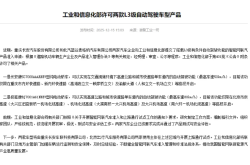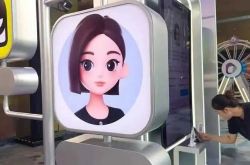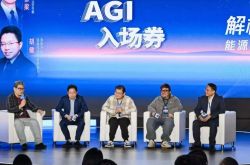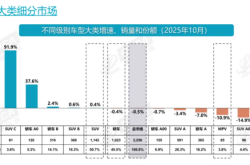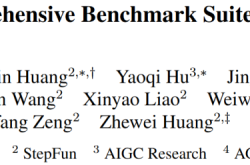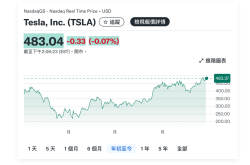4 Trillion Dollar Market Cap Giant Aims to Dominate Computing Power in the Robot Era
![]() 09/02 2025
09/02 2025
![]() 641
641

Author | Xiang Xin
Even with a market capitalization exceeding 4 trillion dollars, NVIDIA strives to grasp the lifeblood of the next technological era, maintaining its peak position. The company is placing a significant bet on robots.
On August 26, NVIDIA unveiled its new "robot brain" product, the NVIDIA Jetson AGX Thor, a development kit tailored for physical AI and humanoid robots. CEO Jensen Huang describes it as the "ultimate supercomputer driving the era of physical AI and general-purpose robots."
The NVIDIA Jetson AGX Thor can be considered the physical core of the robot brain. Compared to its predecessor, the Jetson Orin, Jetson Thor offers up to 7.5 times the AI computing power and 3.5 times the energy efficiency, enabling real-time inference and a significant boost in edge computing power. This is crucial for robots to process information, run models, and execute actions.
Bigger moves are on the horizon. NVIDIA and Foxconn will jointly showcase humanoid robot solutions at Foxconn's Technology Day in November, introducing robots equipped with large language models and robot brains to industrial manufacturing scenarios for the first time.
To replicate its dominant position in AI in the upcoming robot era, NVIDIA is not only providing basic robot hardware and software products and collaborating with the industry to advance robot applications but has also invested in multiple embodied intelligence-related companies and established the Embodied AI Research Lab for technological reserves. NVIDIA aims to embed itself in every aspect of the robotics industry.
NVIDIA's ambition is to make it nearly impossible for any company building humanoid robots to bypass it. 
The New Generation of Robot Super Brain
At the recent World Robot Conference, attendees observed a common issue: While robots can walk, jump, and perform tasks such as industrial sorting and store restocking, their movements are clumsy and inefficient, making it difficult to truly create commercial value.
The core issue is not just the lack of intelligence in the models but also the constraints imposed by edge computing power at the "cognitive level".
When robots process multimodal tasks such as vision, speech, and motion planning, they often lack sufficient training data and edge computing power. This necessitates reliance on cloud computing, where data is transmitted to servers and results are returned, introducing latency and posing stability and security risks. 
Jetson Thor aims to address this bottleneck. Based on the Blackwell architecture, it has hardware optimizations for Transformer-based generative models, providing up to 2070 TFLOPS of peak computing power at FP4 precision, or 2070 trillion floating-point operations per second, and is equipped with 128GB of memory.
This means robots can complete the entire closed loop from perception to decision-making to execution locally, with reaction speeds closer to humans. 
Jetson Thor
Data shows that Thor can provide the first token response within 200 milliseconds and generate over 25 tokens per second, a speed that can already support real-time human-robot conversations.
In addition to a leap in performance, Thor also offers broader adaptability: It supports mainstream generative AI frameworks and models, with a power consumption range of 40–130W, applicable to various scenarios from mobile robots to stationary robots.
It is also deeply compatible with NVIDIA's own ecosystem, seamlessly connecting with tools such as the Isaac simulation platform, Omniverse digital twin environment, and GR00T humanoid robot model.
For developers, this means the upgrade has almost no migration costs, and the entire research and development process can transition smoothly.
Priced at $3499 (approximately RMB 25,000), Thor has been adopted by leading domestic and foreign humanoid robot manufacturers, including Yushu Technology, Yinhe General Robotics, UBTECH, Zhongqing Robotics, Zhiyuan Robotics in China, as well as Agility Robotics, Boston Dynamics, and Figure AI internationally.
Wang He, founder of Yinhe General Robotics, revealed that after applying Jetson Thor, their G1 Premium robot has seen significant improvements in movement speed and smoothness. At the WRC venue, Yinhe General Robotics' robot equipped with Jetson Thor can smoothly and quickly reach the delivery point after picking up a box. 

NVIDIA Ecosystem, with Simulation Technology as the Core Barrier
Jetson Thor is an exceptional hardware product for robot brains, but NVIDIA's true advantage lies in the comprehensive ecosystem it has built.
NVIDIA's robot strategy presents a layout of "hardware and software products + technological reserves + investments + cooperative exploration for industrial implementation".
Starting in 2018, NVIDIA has gradually built a complete closed-loop ecosystem of hardware and software around the robotics industry, covering almost the entire process of robot intelligence from training, testing to deployment:
Hardware includes Jetson Orin and Thor;
Comprehensive platforms and software platforms include the Isaac platform and Omniverse digital twin environment;
Model layers include the Cosmos world model and Project GR00T humanoid robot base model.
Different modules are tightly integrated through virtual simulation technology, forming a complete research and development path. 
The Isaac platform is a comprehensive AI robot development platform that provides a complete set of solutions from hardware to software, including acceleration libraries, application frameworks, and AI models.
It not only includes development tools such as Isaac ROS, Isaac Perceptor, Isaac Manipulator, built on ROS 2, but also integrates the Isaac Sim simulation platform, which is based on Omniverse and provides a physically accurate and realistic virtual environment for robot design, simulation, testing, and training. 
Agility Robotics uses the Isaac platform to train the Digit robot.
Meanwhile, the Isaac platform works in synergy with NVIDIA's other computing platforms such as DGX, OVX, and AGX, used for building robot AI models, simulation testing and training, and deploying and running robot models, respectively.
Jetson Orin and Jetson Thor are edge chip modules launched by NVIDIA, serving as the "robot brains" supporting physical AI applications.
Jetson Orin includes multiple models ranging from entry-level to high-end, covering scenarios with different computing power needs. Its core positioning is to provide high-performance edge computing support for robots, autonomous vehicles, industrial equipment, etc.
Jetson Thor further enhances performance based on Jetson Orin, mainly targeting scenarios with higher computing power demands such as humanoid robots and high-order autonomous machines.
Omniverse is a virtual reality and simulation platform that provides physically accurate and scalable training environments for robots.
For example, developers can let robots repeatedly practice lifting and assembling in a virtual factory and then transfer the learning outcomes to real-world scenarios.
This method not only significantly reduces the risks and costs of real-world testing but also enables robots to gain stronger generalization abilities.
In terms of base models, NVIDIA's two core technologies are the Cosmos world model platform and the Project GR00T general-purpose base model project.
The Cosmos platform consists of a series of world base models, advanced labelers, guardrails, and accelerated data processing and management pipelines. The core component of the platform is the Cosmos model, which enables AI to learn and understand the physical causal laws of the world, make judgments about physical phenomena, and predict future scenes based on current ones.
The Cosmos platform containing world base models can be efficiently integrated with the Omniverse platform. The Omniverse platform creates virtual physical environments, while the Cosmos platform allows AI to observe, analyze, and predict various physical phenomena in the virtual environment, understand the laws of the world's operation, and thus better realize various physical interactions.
The Project GR00T project was initiated by NVIDIA in 2024, focusing on developing AI base models for general-purpose humanoid robots. Currently, three generations of models have been released: Project GR00T, GR00T N1, and GR00T N1.5.
The latest GR00T N1.5 model, introduced in May this year, is a VLA model adopting the industry's mainstream dual-system architecture. System 2 is responsible for understanding the environment and making inference decisions, while System 1 is responsible for executing actions. 
GR00T N1.5 Model Architecture
Comprehensively, NVIDIA's layout in the robotics field is already quite comprehensive, with its most prominent advantage being simulation synthesis technology, which is also the area where it has invested the most and built the strongest barriers.
Ming-Yu Liu, NVIDIA's Vice President of Research, once introduced that NVIDIA's goal is to create a virtual world where robots can repeatedly experiment and continuously learn in this safe parallel world.
By training in a virtual environment first and then transferring to reality, manufacturers can gain significant advantages in cost and efficiency.
Yinhe General Robotics has leveraged Isaac and Omniverse to synthesize a dataset of 1 billion samples, training the world's first model, GraspVLA, that can achieve zero-shot generalization with only pre-training, possessing generalization capabilities for environmental changes such as height, planar position, object category, lighting, distractors, and background.
To further promote cutting-edge research, NVIDIA established the Embodied AI Research Lab (GEAR) in 2024, focusing on four major research areas: multimodal base models, general-purpose robot models, virtual world agents, and simulation synthesis data.
Jim Fan, NVIDIA's Director of AI and Distinguished Scientist, is the head of the lab. The NVIDIA Embodied AI Research Lab has launched many cutting-edge technological achievements, such as the popular ASAP framework, jointly developed by the NVIDIA lab and Carnegie Mellon University, enabling Yushu Technology's G1 to replicate classic scenes of Cristiano Ronaldo, Kobe Bryant, and LeBron James. 
Externally, NVIDIA continuously expands its ecosystem through investments and partnerships, investing in companies such as Figure AI, Field AI, and Skild AI, and collaborating with some industry players to develop humanoid robots, mainly for industrial and medical purposes.
NVIDIA is collaborating with Foxconn, planning to deploy humanoid robots at Foxconn's Houston factory for the production of NVIDIA's AI servers. NVIDIA will showcase its humanoid robot solutions at Foxconn's Technology Day in November.
NVIDIA, Foxconn, and Kawasaki Heavy Industries have also collaborated to develop a nursing robot, Nurabot. Already deployed at Taichung Veterans General Hospital in Taiwan, Nurabot can transport medications, samples, patrol wards, and guide visitors, reportedly reducing nurses' workload by 30%. 
From the virtual world to real factories, from basic research to industrial cooperation, NVIDIA is weaving its technology and capital into a "robotic network" that covers the entire industry chain. 
Domestic and Foreign Manufacturers Compete to Become Essential in the Era of Robots
NVIDIA's goal is clear: to become an irreplaceable "infrastructure" in this industry through a comprehensive layout of products, ecosystems, and capital.
In the era of AI training, GPUs and CUDA made NVIDIA an essential choice for all AI companies; in the era of robots, Jen-Hsun Huang hopes that products like Jetson Thor and the Isaac platform can play the same role.
NVIDIA's strategic logic is a "prescient" global layout.
Looking back at the past two decades, it has almost always laid the groundwork early in the wave of technological advancements: when deep learning had not truly taken off, NVIDIA had already built a software ecosystem with CUDA; before the explosion of generative AI, it intensified the research and development of the H100 GPU.
Now, as the robotics industry is still in its infancy, NVIDIA has already deployed computing power, simulation, models, investment, and cooperation in advance. Jen-Hsun Huang's core idea is: when the industry truly explodes, NVIDIA will already be positioned at key nodes, becoming an unavoidable supplier.
Regardless of where robots are produced or which industry they serve, as long as computing power and simulation are needed, it is almost impossible to bypass NVIDIA's hardware and software. This global binding gives NVIDIA a unique strategic position in the robotics industry chain.
Chinese manufacturers are attempting to benchmark NVIDIA from different angles.
Several companies, including Black Sesame Technologies, Rockchip, and Digua Robotics (a subsidiary of Horizon Robotics), specialize in chip module replacements.
Digua Robotics has recently unveiled the RDK S100 development kit tailored for embodied intelligent robots. This kit features a collaborative design integrating large and small brains, offering two distinct computing power specifications: 80TOPS and 128TOPS. With a single development kit, it facilitates the closed loop of "perception-decision-execution" for embodied intelligent robots. 
Meanwhile, other companies are delving into software platforms, exemplified by Huawei's CloudRobo and Tencent's Tairos, both tailored for embodied intelligence.
Huawei's CloudRobo encapsulates end-to-end capabilities, encompassing data synthesis, annotation, model development, simulation verification, cloud-edge collaborative deployment, and security supervision. It offers three core models aimed at accelerating embodied intelligence innovation.
History has repeatedly demonstrated that technological shifts invariably give rise to new global leaders.
The dawn of the electrical era birthed General Electric;
The computer age saw the rise of IBM and Microsoft;
In the mobile internet era, Apple ascended to the throne of market capitalization with the iPhone;
The ascendancy of AI has positioned NVIDIA as the technology company with the highest global market value.
Now, robots are poised to dominate the narrative of the next era, and NVIDIA, through Jetson Thor and its comprehensive stack layout, aims to steer this wave. Chinese manufacturers are likewise determined not to be left behind.


